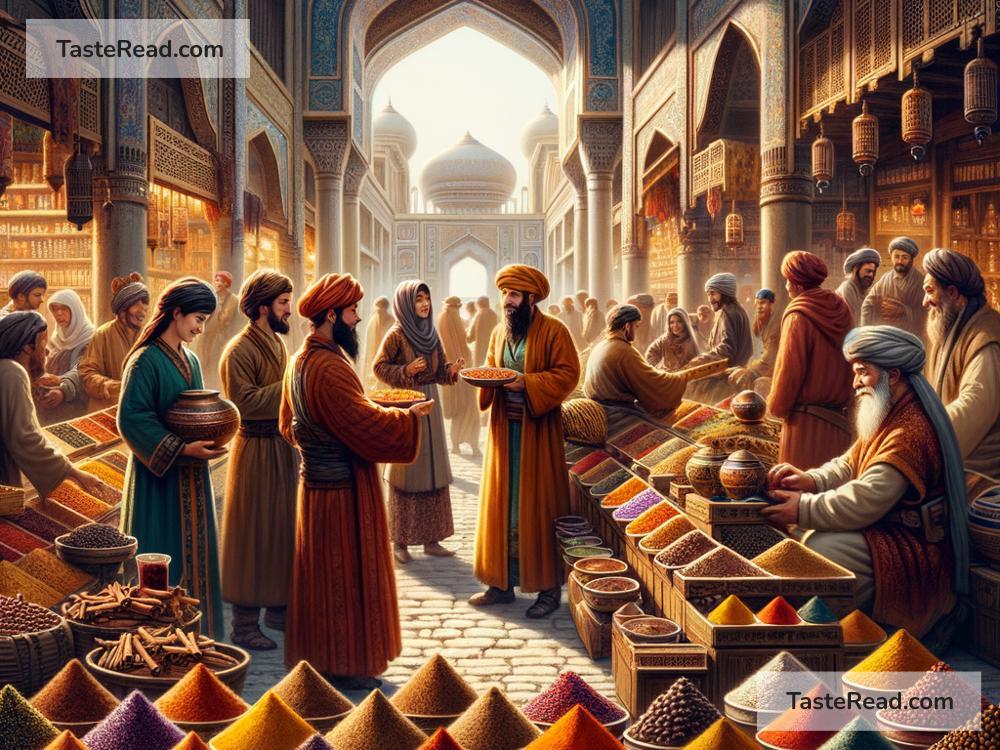The Historical Use of Spices on the Silk Road: Unlocking Culinary Exchange
The Silk Road is one of history’s most fascinating trade routes. Stretching thousands of miles across Asia, Europe, and Africa, this interconnected network of paths brought goods, ideas, and cultures together for over 1,500 years. But perhaps its most flavorful contribution to human history was its role in the exchange of spices. From cinnamon and pepper to saffron and turmeric, spices were a prized commodity that shaped cuisines, economies, and even empires.
The Value of Spices
Why were spices so important? To understand their historical significance, we must remember that life in ancient times didn’t include refrigerators or abundant access to varied foods. Spices served many purposes — they preserved meat, flavored everyday dishes, masked the taste of spoiled food, and were even used medicinally. Because spices were rare and difficult to grow in many regions, they became incredibly valuable. Owning or trading spices signaled wealth and power. Some spices, like saffron and cloves, were at times worth more than gold by weight.
The Silk Road and the Spice Trade
The Silk Road wasn’t a single road, but rather a web of trade routes connecting China in the east to the Mediterranean in the west. Traders traveled by camel, horse, and foot along these paths, carrying goods ranging from silk and porcelain to spices and dried fruits.
Spices grown in tropical climates, especially in regions like South Asia and Southeast Asia, were some of the most sought-after items. Indian black pepper and cardamom, Chinese ginger, and Arabian frankincense were all transported along the Silk Road. Special stops along the way, such as bazaars and trade hubs, allowed merchants to exchange goods. The journey could take months or years, but the profits were often worth the effort.
Culinary Exchange Along the Silk Road
As spices traveled to new lands, they didn’t just enhance food; they also transformed it. Chefs, cooks, and home cooks began experimenting with spices to create unique dishes. This cultural exchange is one of the enduring legacies of the Silk Road.
Take cumin, for example. Cumin originally came from the eastern Mediterranean but quickly spread into South Asia thanks to trade. Indian curries often feature cumin as a key ingredient alongside turmeric, coriander, and mustard seeds. This fusion of flavors enriched not just Indian cuisine but inspired dishes throughout Central Asia and the Middle East.
Similarly, nutmeg and cloves, both native to the Maluku Islands in Indonesia, became essential in Persian stews and European desserts. Traders brought these spices from Southeast Asia to the Persian Empire and later to Venice, Italy, where they became synonymous with luxury and festive cooking.
Chinese cinnamon (cassia) had a similar journey. It not only flavored dishes in East Asia but found its way into European baking and even African stews. Each time a spice entered a new culture, people adapted it to local recipes and tastes, making food more diverse and exciting.
Spices and Medicine
The Silk Road didn’t just help spread culinary ideas — it also helped disseminate knowledge of medicinal practices. Many people in ancient times believed spices had healing properties. Ginger was used to soothe upset stomachs, while turmeric was thought to fight inflammation and improve overall health.
Arabian traders brought the medicinal knowledge of spices to Persia, India, and beyond. On the other side of the world, Chinese herbal medicine incorporated many of the spices that came through Silk Road trade. These practices eventually influenced Greek and Roman medical traditions too.
The Legacy of Spice Trade
The spice trade along the Silk Road laid the foundation for globalization. It connected distant lands, fostering cultural interactions that shaped the world’s cuisines and traditions. Even today, the influence of Silk Road spices is evident in the foods we eat. Consider Italian pasta seasoned with black pepper, Indian masalas filled with a blend of cumin and coriander, or Moroccan tagines enriched with cinnamon and saffron.
Additionally, the value and allure of spices from the Silk Road paved the way for future exploration. By the 15th and 16th centuries, European powers like Portugal and Spain were motivated to find sea routes to India and Southeast Asia to control the spice trade. This led to the Age of Exploration and the eventual globalization of spices.
Conclusion
The Silk Road was so much more than a trade pathway — it was a bridge that connected people, cultures, and flavors. Spices played a significant role in this exchange, helping to create culinary traditions that remain vibrant and beloved today.
From the peppercorns in your spice rack to the cinnamon in your morning oatmeal, the legacy of Silk Road spices continues to enrich our daily lives. What once traveled thousands of miles in the pouches of traders now adds joy and flavor to kitchens around the world. The Silk Road reminds us that food is a universal language, bringing people together in unique and delicious ways.


